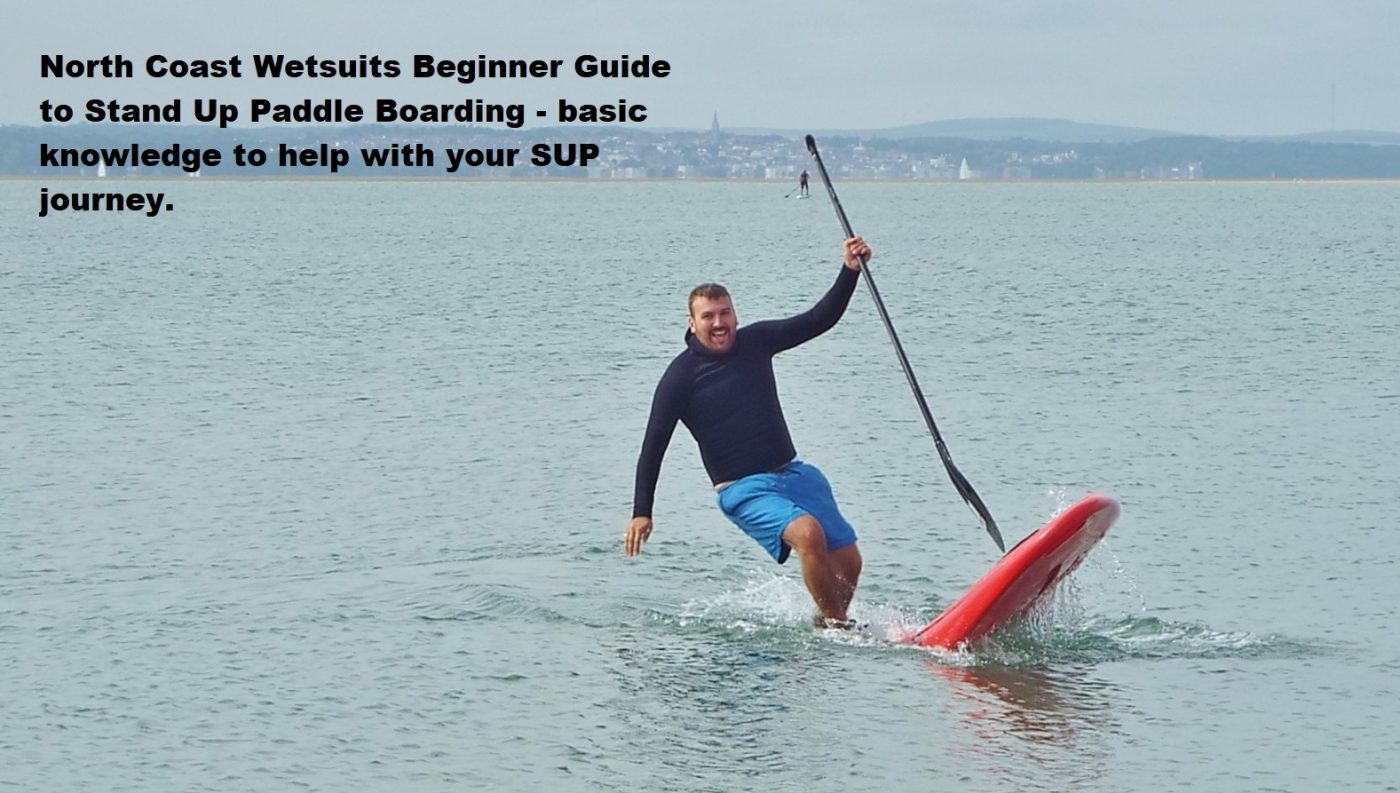Stand up paddle boarding continues to grow with many new riders coming into the fold over the last twelve months. The cocktail of COVID, furlough and staycation means people have had time, some disposable income and incentive to make use of home soil (or water) – in terms of outdoor recreation. SUP fits the bill perfectly. Easily accessible, fairly quick and painless to learn, fun for the whole family and versatility that knows no bounds. Stand up paddling is indeed an all comers activity that can be practised anywhere there’s water.
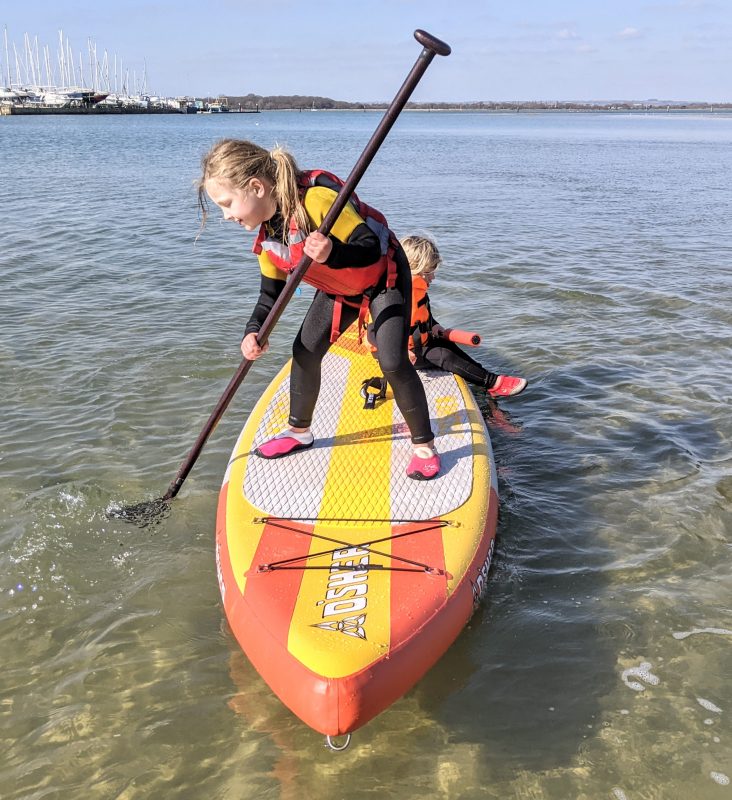
Here at North Coast Wetsuits we’re big supporters of stand up paddle boarding. We indulge ourselves, sell the gear and all the accessories to get you afloat. We also come from a long history of watersports but appreciate not everyone does. In fact, most new stand up paddlers have zero previous water experience and understanding of board sports. With this in mind NCW have put together the North Coast Wetsuits Beginner Guide to SUP. This will cover a bunch of topics designed to help you progress quickly, efficiently and as safely as possible. If you have any questions about SUP then let us know.
Stand up paddle boarding history in a nutshell.
Standing and paddling craft with a paddle isn’t anything new. For thousands of years people have utilised the paddle as a form of propulsion. Some would sit whilst others stand, depending on their circumstances and need for being on the water.
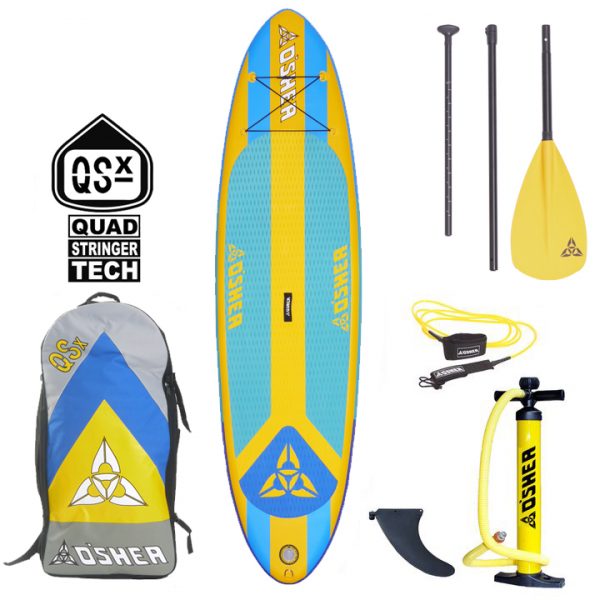
O’Shea 10’2 QXS Inflatable SUP board, full package
The ideal entry to an intermediate level board, perfect for those seeking high performance on a budget. Recommended rider weight up to 100kg
NOTE THESE ARE ON BACK ORDER AND DELIVERY MAY TAKE 3 TO 5 DAYS
Features:
– 1000D PVC, with double rail lap – The best & hardest wearing construction, better than most premium or high end boards!
-Brightly coloured top and bottom… Be Safe, Be Seen!
– The package is supplied with its own adjustable paddle.
– 6″ thick drop stitch fabric gives the stiffest board possible, both longitudinally and torsionally.
– O’Shea boards can be used at lower pressure more typically 13-15psi, rather than 15-20psi, possible to achieve for any mortal, even light weights, and easily possible with the std high volume pump supplied.
– Perfect combination of plan shape, width and thickness = the most stable SUP platform for any given size of board.
– Reinforced towing eye and rear leash eye.
– O’Shea pro back pack supplied.
– Original reliable H3 Valve.
– RMS – Removable fin system.
– Cad Designed and human tested by Farrel O’Shea
O’Shea Inflatable Paddleboards are supplied complete with…
– O’Shea board bag which can carry the board as a back pack and made from highly durable 600D recycled nylon
– 3 piece Alu Paddle – fully adjustable
– O’Shea HP2 Double Action Power Pump
– US Box Fin
– Leash
– COMES WITH A FREE QUICK RELEASE LEASH BELT
NOTE : currently only the orange colorway is available per the second image
Want to read our fair returns policy first?During the 1950s overseas tourism exploded and the Hawaiian Islands had an influx of visitors, some of whom were keen to learn the art of surfing. On hand to capture the action with expensive, non-waterproof cameras were the Waikiki Beach Boys. This crew were highly skilled across multiple water craft and were trusted with photographing the learner surfers and not dropping camera equipment in the drink. Piloting oversize surfboards in standing position – propelled with paddles – the Beach Boys did a sterling job and solidified their reputations as legendary watermen.
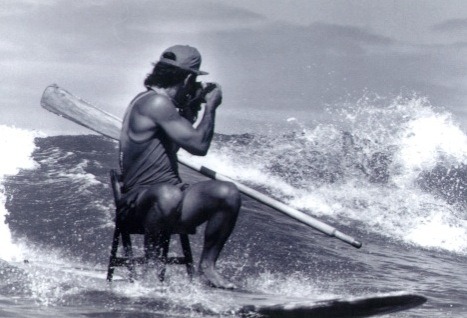
Fast forward to the early 2000s and Laird Hamilton, Dave Kalama and a bunch of other Hawaiian surfing royalty rediscovered the art once more. Initially a tool for making use of flat wave days in summer the group soon took their boards and paddles into the surf. Others soon cottoned on with the stand up paddle boarding bug spreading to the rest of the world where it continued to grow exponentially.
Inflatable SUP vs hard shell stand up paddle boards.
SUP boards can be split into two types. The most popular by far are inflatable stand up paddle boards which outsell their rigid, hard shell SUP siblings considerably (for a variety of reasons). Inflatables (or iSUPs for short) are marketed as easy to store, easy to transport and better for beginners – the latter point not necessarily being 100% accurate. Whilst inflatables (certainly quality types) are fine for learning the performance traits of hard stand up paddle boards still exceed those of iSUPs. Inflatable technology has improved massively over the last few years and air boards do make sense for a large percentage of paddlers. It’s important, however, to purchase the right inflatable that’s constructed with quality materials. Unfortunately there are a lot of less quality inflatable stand up paddle boards on the market which won’t do you any favours.
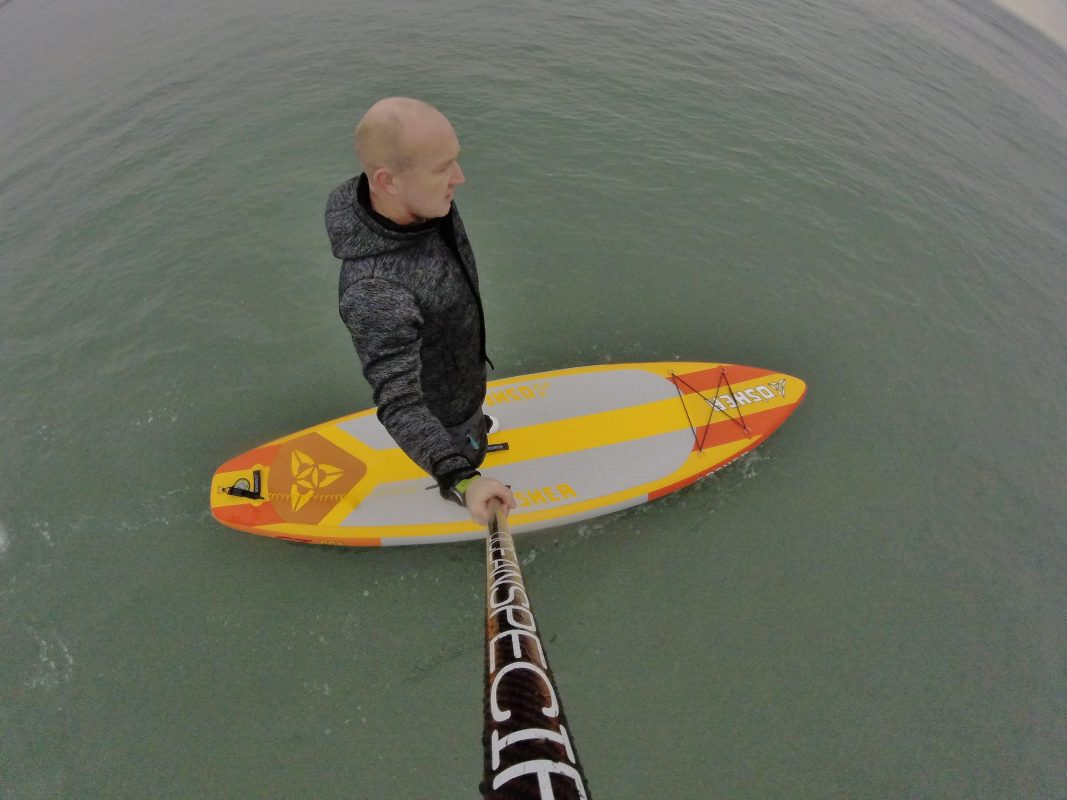
Hard stand up paddle boards deliver more efficiency across all areas of SUP. If you want to surf, or race for instance, then this is the way to go. Although inflatables do still work to some degree in these environments.
You can read a more in depth article about the two types of stand up paddle board by hitting the following link –
SUP paddles.
Stand up paddle board paddles are THE defining pieces of kit. Without you’d just be standing on a board floating. Yet many miss this fact and end up with something less than ideal. Cheap alloy paddles with flexible plastic blades do no favours for anyone. What a rider needs is something as efficient as possible that transfers all energy into momentum – usually forwards but also backward when needed.
SUP paddle shafts differ as do blade shapes. There are all manner of weird and wonderful designs marketed as being the best for this type of paddling and that. When push comes to shove there’s no better way of judging than testing paddles for yourself and seeing what fits your requirements the best.
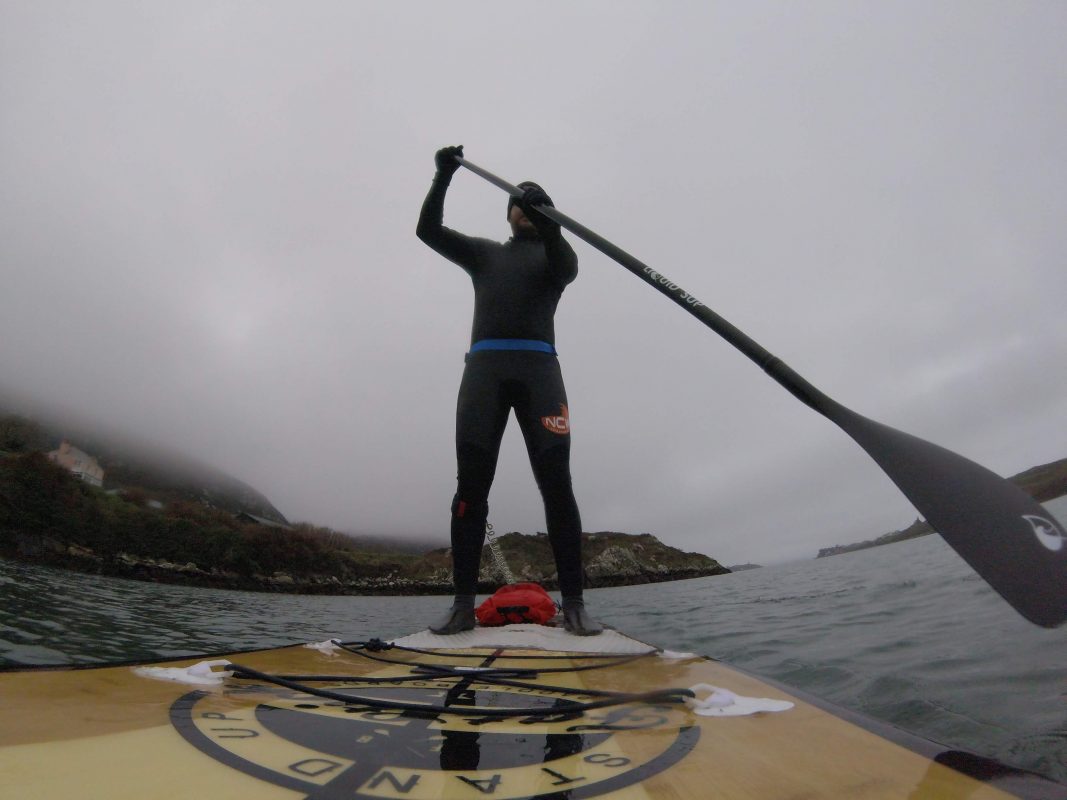
We will say that if you purchase a stand up paddle board package from a reputable brand the included paddle will do the job to a decent level and get you on the water. In time, however, it could be worth upgrading to something better.
Choosing your first stand up paddle board.
You need to be honest with yourself when choosing your first stand up paddle board.
- What type of SUPing do intend on doing – flat water, river SUP or waves for instance?
- Where do plan on paddling the most – inland waters or at the coast?
- Think about your aspirations and ambitions. Where do you see your paddling heading? Does the board you’re thinking of buying allow for progression?
- Will others be using your stand up paddle boarding gear – family member for instance?
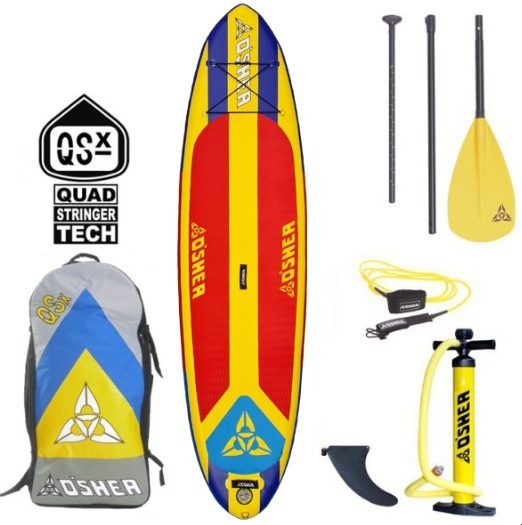
IN STOCK NOW : O’Shea 106 QXS Inflatable SUP, full package
A true family favourite, both floaty and stable. The best value O’Shea board available. Recommended rider weight up to 120kg.
Features:
– 1000D PVC, with double rail lap – The best & hardest wearing construction, better than most premium or high end boards!
– Brightly coloured top and bottom… Be Safe, Be Seen!
– The package is supplied with its own adjustable paddle.
– 6″ thick drop stitch fabric gives the stiffest board possible, both longitudinally and torsionally.
– O’Shea boards can be used at lower pressure more typically 13-15psi, rather than 15-20psi, possible to achieve for any mortal, even light weights, and easily possible with the std high volume pump supplied.
– Perfect combination of plan shape, width and thickness = the most stable SUP platform for any given size of board.
– Reinforced towing eye and rear leash eye.
– O’Shea pro back pack supplied.
– Original reliable H3 Valve.
– RMS – Removable fin system.
– Cad Designed and human tested by Farrel O’Shea
– COMES WITH A FREE QUICK RELEASE LEASH BELT
Board Spec:
– 10’6″ x 33 x 6″
– Volume = 290LTR
– Recommended Rider Weight = 120KG or Less
The above are just a few points to consider and could dictate what type of stand up paddle board you stump up cash for. It doesn’t always have to be the usual round nose 10’6 you go for. If flat water paddling, exploring nooks and crannies – either open water or sheltered – is your bag then a touring SUP between 11’-12’6 will be perfectly fine. Don’t be put off by the pointy nose and elongated shape! Likewise, an all round 10’6-10’8 still may be the best option.
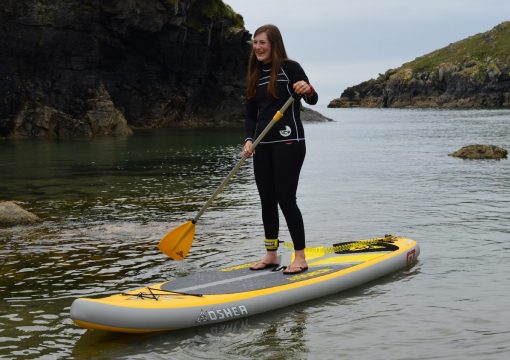
Stand up paddle board clothing.
As with choosing your first board you should consider the clothing you’re going to be wearing. It goes without saying the UK’s weather isn’t exactly consistent. The time of year will influence what (general) type of weather you encounter, although there are always exceptions to the rule.
Most new stand up paddle boarders will be seeking fair weather conditions at first. In time he/she may fancy upping the ante and paddling when it’s not wall to wall sunshine, blue skies and rising temperatures. But paddling attire needs to be considered whatever the season.
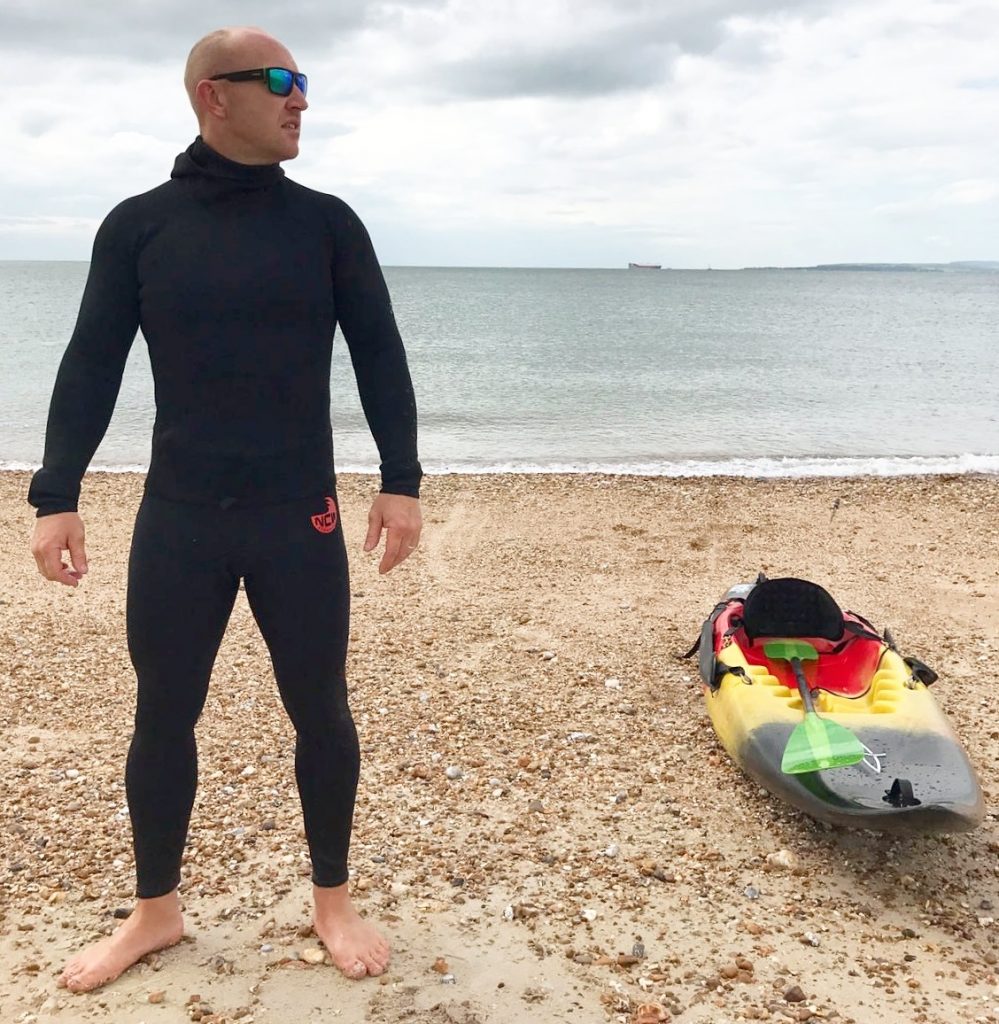
2.5mm Super Stretch Unisex Neoprene Sea Strides / Sea Legs / Trousers / Leggings
2.5mm Super Stretch Neoprene unisex multi-purpose Sea Strides / Pants / Trousers / Leggings
Super warm and comfortable with a drawstring waist. We’ve used full super stretch on these so they can be tailored for a close snug fit to keep you cosy and warm.
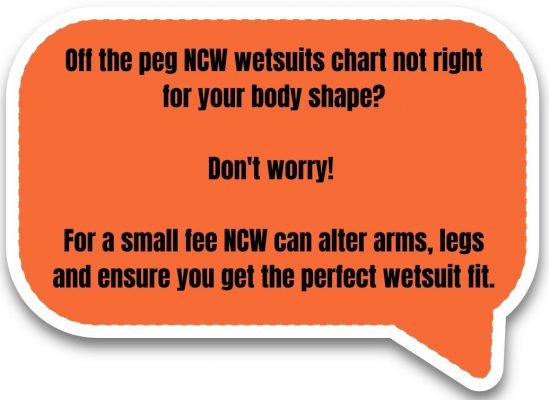
Our unisex sea strides are about pure comfort. Being applicable leggings for a wide variety of watersports, including stand up paddle boarding, kayaking and surfing (during warmer months), there stretch properties are unsurpassed giving users supreme comfort and performance without compromise on fit. Using in tandem with NCW’s thermal rashvests our neoprene pants can be a good alternative to a summer wetsuit. Warm, yet flexible, these trousers should be an essential part of any water user’s kit bag. Also applicable for off season non-immersive applications such as SUP / kayak race training on flat water or base layer beneath standard winter wetsuits.
Hate getting into wetsuits ? try a pair of these and one of our various neoprene rash vests for a great warm combo with the need of getting in and out of a wetsuit.
Could be great option for cold temperature OCR races and mud runs too!
Size Guide for Sea Strides (waist size) :
S = 26-30″ height to around 5’8″ (women’s 10-12)
Note that women’s dress size is just a guide PLEASE check your measurements and we can alter these to suit and fit for a small fee too!
Remember all North Coast Wetsuits kit is designed with valuable rider feedback and with you the waterman/women in mind….Adopt, Adapt, Evolve.
A wetsuit may be the wisest choice – especially if you’re taking dunkings often. But 5/3mm winter rubber mightn’t be the best option. In summer, even on cooler days, paddlers will be working up a sweat and too thick a wetty will cause overheating. Something thinner, such as a 3mm, would be better. You can always layer this up with a thermal rash vest worn beneath the wetsuit or over the top. We’ve talked about layering systems here on NCW’s website often. It’s a thing and definitely worth considering. So much so that you don’t actually need a full blown wetsuit for SUP. You may choose a pair of neoprene leggings/strides paired with a 2mm rashy with a fleece layer on top. This way you can remove the fleece if you get too warm. Also, if it does get wet then fleeces tend to retain their heat properties. Any garments not being used can be stowed in a waterproof dry bag on the deck of your stand up paddle board.
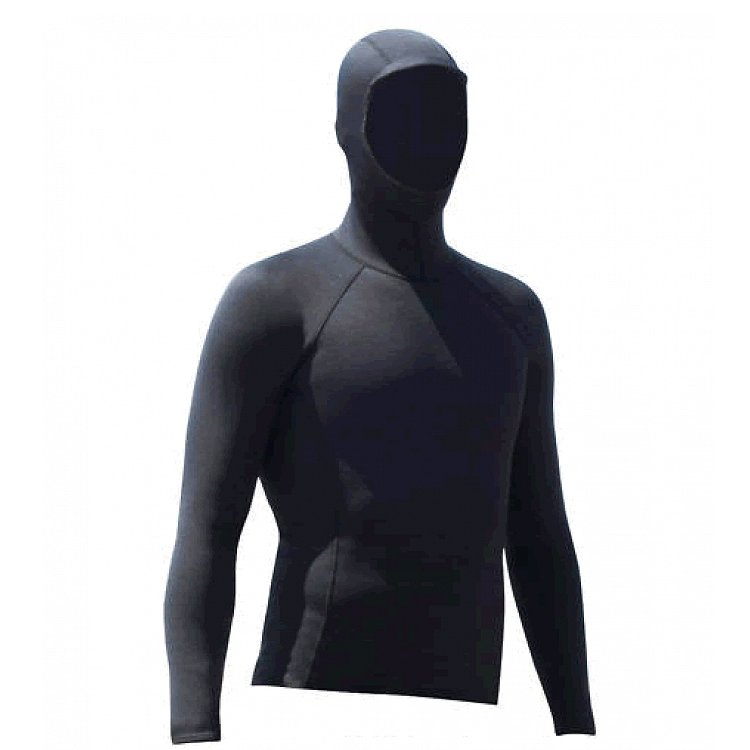
1.5mm Thermal Hooded Long Sleeve Rash Vest / Rash Guard (unisex fit)
Hooded long sleeve neoprene rash vest / guard.
The NCW hooded long sleeve rash vest/ guard is made from our specially formulated thermal watersport material mix being 90% neoprene and a 10 % mix of nylon / lycra / thermal jersey which is for stretch, flex, durability and added warmth. These are a unisex fit, just use your chest measurement as below.
Now with six sizes available as below, these have plenty of stretch so chest size is really a good indication of what size you’d need :
Small up to 37 inch chest (up to 94cm) (women’s 10)
Medium 38/39 inch chest (96 – 98cm) (women’s 12)
Large 39/40 inch chest (99 – 101cm) (women’s 14)
XL 40/41 inch chest (102 – 105cm) (women’s 16)
XXL 42/44 inch chest (106 – 111cm) (women’s 18)
3XL 44/46 inch chest plus (112 – 117cm) (women’s 20)
WOMEN’S sizes 6 and 8 available in our junior range – CLICK HERE
NOTE : we also have a similar in 2mm camo – CLICK HERE
SCROLL DOWN FOR MORE PRODUCT INFORMATION
Want to read our fair returns policy first?Ultimately what you wear when you paddle is important. For any advice with regards to SU wear get in touch with us here at NCW.
SUP safety.
During 2020’s explosion of stand up paddle boarding popularity many newbies got hold of gear, went afloat and didn’t really give due consideration to what was going on in terms of weather conditions, water states and how all the elements combined could cause a safety issue. This is no criticism as a large percentage of these new SUPers didn’t have prior water experience. Unfortunately, however, this lack of knowledge and bad decision making resulted in quite a lot of emergency service call outs and rescues. In one incident, which happened not too far from NCW’s Rubber Shack HQ, the worst happened and a paddler lost his life.
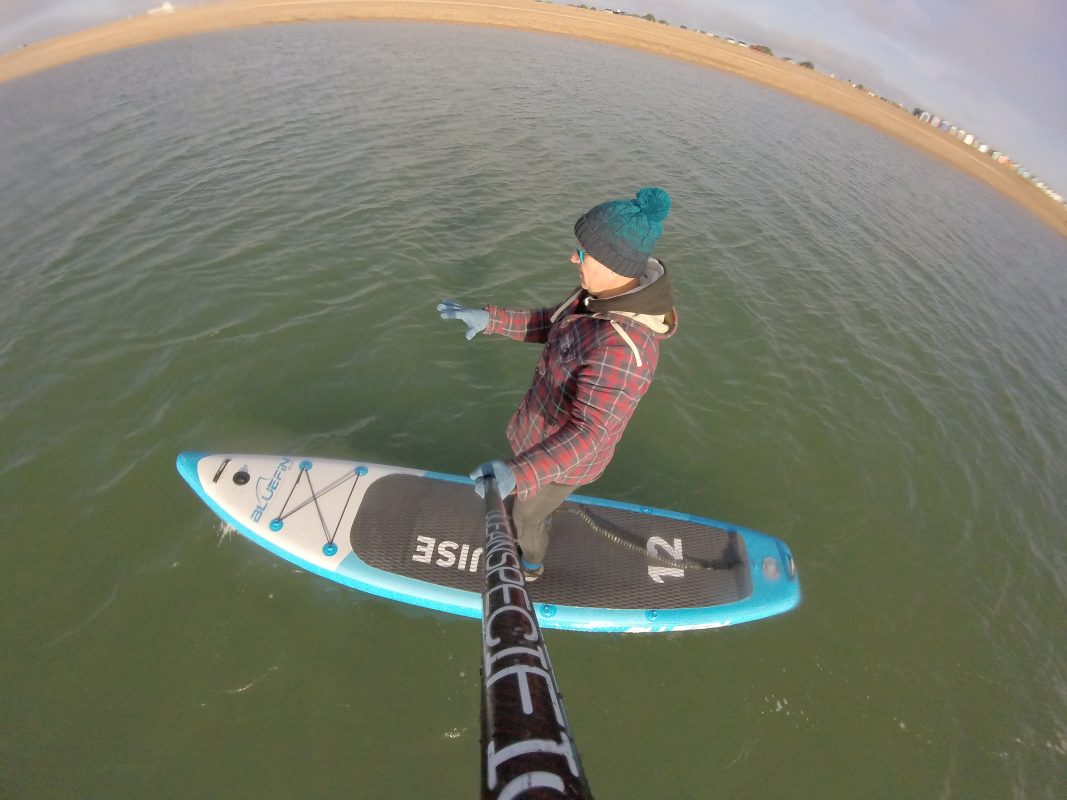
SUP doesn’t need to be life threatening. With a few considerations prior to going afloat, riders will be as safe as they can be. Leashes (the right type for the environment you plan on SUPing, additional means of floatation (such as PFDs), clothing (as we’ve already discussed above), understanding weather, tides and the area you plan on putting in at all contribute to SUP safety. Knowledge is power and the more you have the better. Take time to gen up on all things SUP and if you need to ask questions then do so. Also, consider a stand up paddle board lesson or course. An experienced teacher will be able to pass on much more info/skills, efficiently, in a shorter space of time.
Stand up paddle boarding versatility.
SUP doesn’t have to just be about paddling a 10’6 inflatable of flat water. There are plenty of avenues riders can branch off to if they choose. Once those initial SUP skills have been nailed down then the world’s literally your oyster. Here are a few suggestions of the type of stand up paddle boarding you could potentially progress on to.
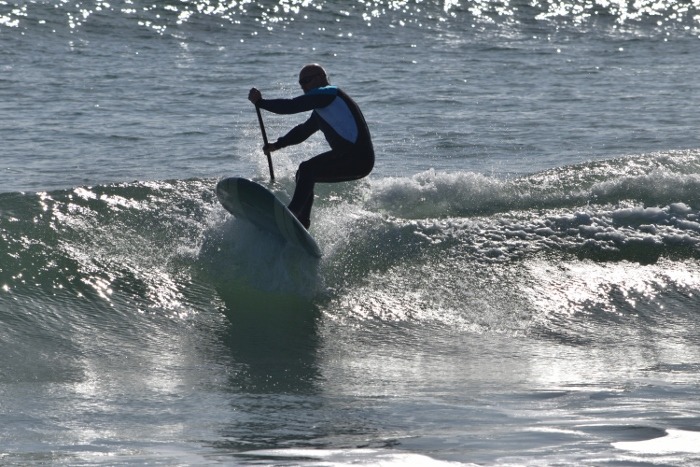
Touring SUP: covering (some) distance with an emphasis on straight lining and adventure.
SUP racing: pitting your wits against other paddlers, vying for the podium.
SUP surfing: riding your stand up paddle board in waves.
WindSUP: attaching a windsurfing rig and utilising blowy conditions with a sail.
White water SUP: paddling your stand up on rivers, possibly ‘playing’ with flow generated waves.
SUP foiling: attaching a hydrofoil to your board and using wave energy to fly above water.
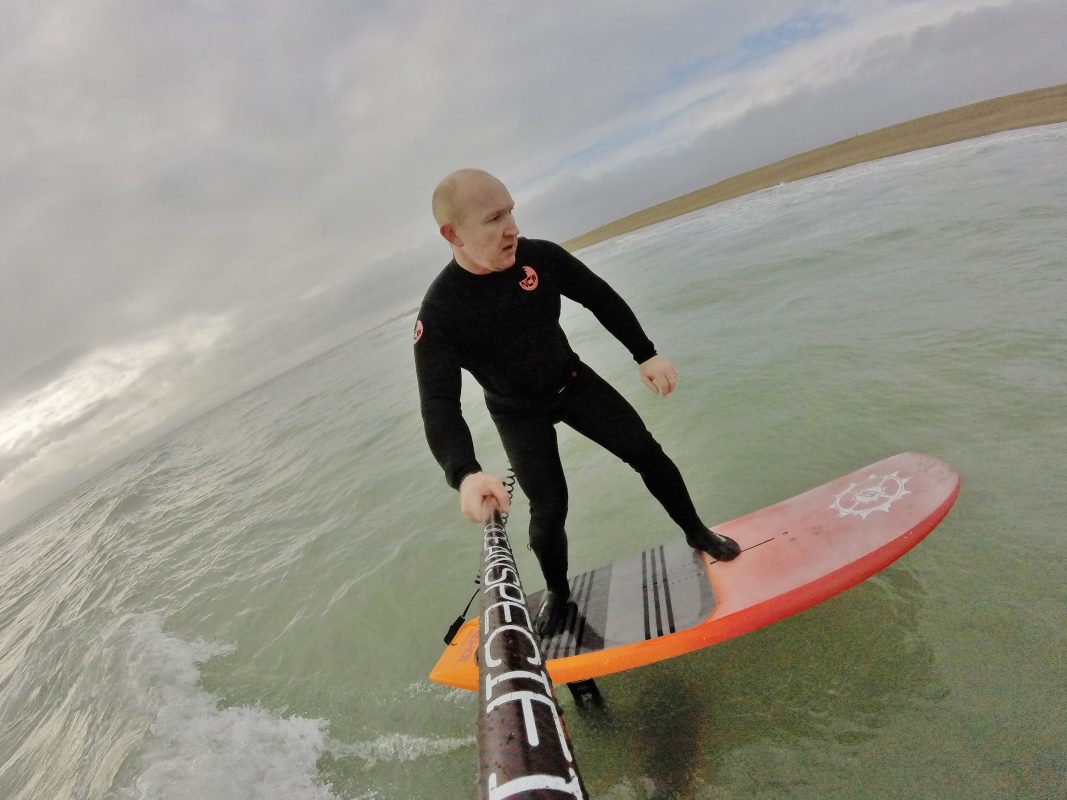
SUP terminology.
As you get into stand up paddle boarding you’ll come across a whole load of jargon and terminology reflective of the activity. Here’re a few of the more common words and phrases.
- SUP – stand up paddle board.
- iSUP – inflatable stand up paddle board.
- Deck – the board’s top which you stand on.
- Hull – the board’s bottom.
- Fin(s) – the pointy bits protruding from the hull.
- Leash (coiled and straight – the thing that tethers you to the board.
- Handle – what you hold to carry the board.
- Bungee – chord that allows the stowing of belongings.
- Nose and tail – front and back of the board.
- Paddle grip – the paddle’s handle.
- Shaft – the part of the paddle you hold onto.
- Blade – the power part of the paddle.
- Dihedral – the contours of the paddle blade that stop it wiggling about.
- Feathering – angling the paddle as it’s recovered and swung, through the air, ready for the next stroke.
- Cadence – the rate at which you paddle.
- Bracing – using the paddle to stop you falling by laying it on the water and leaning on the blade.
- Wipeout – falling off.
- Stoke – enjoyment.
- Pivot turn – sinking the tail of the board, putting a paddle stroke in a spinning fairly quickly.
- Carve – using the board’s rail to turn, usually when on a wave.
- Pearling – burying the board’s nose.
- Hucking – dropping a waterfall in river SUP mode.
- BA – buoyancy aid.
- Quick release belt – leash safety mechanism.
- Wetty – wetsuit.
- Drysuit – moisture free protection against the elements.
- VHF – handheld radio some paddlers keep with them whilst paddling.
- Portage – getting off the water and carrying your SUP around an obstacle.
- Downwinder – paddling with the wind on your back, path of least resistance.
- Shaka – the hand gesture some paddlers make as a sign of inclusion.
If you have any more questions regarding stand up paddle boarding then let us know.

